 Online broadband film distributer, and latterly video content provider CinemaNow, has announced that they will be carrying some high-definition from HDNet on their Internet to PC delivery platform. It’s the first time that HDNet’s content has been made available on-demand through an online broadband service.
Online broadband film distributer, and latterly video content provider CinemaNow, has announced that they will be carrying some high-definition from HDNet on their Internet to PC delivery platform. It’s the first time that HDNet’s content has been made available on-demand through an online broadband service.
CinemaNow are long-standing pioneers in the area of delivering licensed films to PC over a broadband connection, starting as they did in 1999, a long time before the home user broadband audience existed. They weathered the storms and could be well placed to take advantage of growing broadband usage.
 Mark Cuban, the CEO of HDNet, has been slowly gathering HD content to the point where HDNet now lay claim to having more original high-definition content than any other network. We at Digital-Lifestyles.info have had our eye on him for years, as we think he’s a smart cookie. He not only spots upcoming trends, but turns them into businesses. He made a fortune when he sold broadcast.com to Yahoo for billions of dollars at the peak of the market.
Mark Cuban, the CEO of HDNet, has been slowly gathering HD content to the point where HDNet now lay claim to having more original high-definition content than any other network. We at Digital-Lifestyles.info have had our eye on him for years, as we think he’s a smart cookie. He not only spots upcoming trends, but turns them into businesses. He made a fortune when he sold broadcast.com to Yahoo for billions of dollars at the peak of the market.
Cuban has publicly stated that HDNet content will not be DRM-protected, infact he thinks his refusal to use DRM will give HDNet a competitive advantage.
This agreement between HDNet and CinemaNow gives their customers the chance download and own the HD content.
Further deals along these lines are inevitable in time, with the only question mark over HD content being delivered over broadband connections being the current speeds of what is defined as broadband. HD content, because of its extra resolution produces larger files, these take extra time to come down to the computer being used for playing it back. As regular readers will know, we think calling a 512k DSL connection “broadband” is insulting to the customers.
 Following a long tradition of The Man stealing ideas off the street to flog their products, T-Mobile is organising a series of impromptu ‘street gigs’ to promote their new Sony Ericsson D750i camera phone.
Following a long tradition of The Man stealing ideas off the street to flog their products, T-Mobile is organising a series of impromptu ‘street gigs’ to promote their new Sony Ericsson D750i camera phone. Keen to milk every last ounce of PR potential from the gigs, T-Mobile will be broadcasting the performances online, with company bods on hand to encourage T-Mobile subscribers to test the new handset
Keen to milk every last ounce of PR potential from the gigs, T-Mobile will be broadcasting the performances online, with company bods on hand to encourage T-Mobile subscribers to test the new handset  “T-Mobile Street Gigs is the first of our new initiatives to deliver unique experiences for customers,” grooved Phil Chapman, UK marketing director, loosening his tie and turning down the David Gray.
“T-Mobile Street Gigs is the first of our new initiatives to deliver unique experiences for customers,” grooved Phil Chapman, UK marketing director, loosening his tie and turning down the David Gray. Amazon.com’s revenue soared internationally in the second quarter as electronics and other non-book bits’n’bobs made up more of its business.
Amazon.com’s revenue soared internationally in the second quarter as electronics and other non-book bits’n’bobs made up more of its business. Amazon.com’s chief financial officer, Tom Szkutak, announced that third-party sales accounted for 28 percent of Amazon.com’s total items sold, sprightly stepping up from 24 percent for this time last year.
Amazon.com’s chief financial officer, Tom Szkutak, announced that third-party sales accounted for 28 percent of Amazon.com’s total items sold, sprightly stepping up from 24 percent for this time last year. This includes US$56 million (~£32.25m, ~€46.6m) in income tax expense, which was up from US$5 million (~£2.87m, ~€4.16m) a year earlier.
This includes US$56 million (~£32.25m, ~€46.6m) in income tax expense, which was up from US$5 million (~£2.87m, ~€4.16m) a year earlier. Illegal music downloaders shell out more for legitimate music downloads than goody two-shoes music fans.
Illegal music downloaders shell out more for legitimate music downloads than goody two-shoes music fans.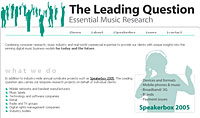 How much both groups spend on CDs wasn’t specified.
How much both groups spend on CDs wasn’t specified.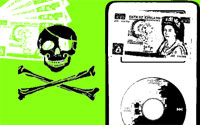 Respondents cited built-in cameras, organiser functions and video cameras above music players in their preferences for mobile phone features.
Respondents cited built-in cameras, organiser functions and video cameras above music players in their preferences for mobile phone features.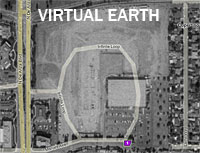 Microsoft has launched the first public beta of its Virtual Earth, an online mapping application overlaying satellite images with local searches and maps.
Microsoft has launched the first public beta of its Virtual Earth, an online mapping application overlaying satellite images with local searches and maps.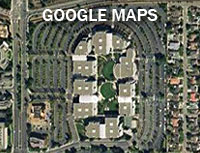 Virtual Earth will also have the capability to visually point out locations for ATMs, restaurants, and petrol stations – something that the rival Google Maps service has been able to do since incorporating satellite imagery in April this year.
Virtual Earth will also have the capability to visually point out locations for ATMs, restaurants, and petrol stations – something that the rival Google Maps service has been able to do since incorporating satellite imagery in April this year.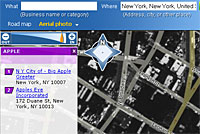 Mac users, however, will have to wait until autumn for a version that runs on their machines.
Mac users, however, will have to wait until autumn for a version that runs on their machines. Wags on the Internet are claiming that Microsoft has virtually wiped Apple off the face of the Web, noting that Apple’s Silicon Valley headquarters – which can be seen in their full glory on Google Maps – appears as nothing more than a deserted parking lot in Virtual Earth.
Wags on the Internet are claiming that Microsoft has virtually wiped Apple off the face of the Web, noting that Apple’s Silicon Valley headquarters – which can be seen in their full glory on Google Maps – appears as nothing more than a deserted parking lot in Virtual Earth. London’s Ravensbourne College is launching a new program called the School of Computing for the Creative Industries.
London’s Ravensbourne College is launching a new program called the School of Computing for the Creative Industries. We would have thought that most of the passion manifests itself in the student bar, but the School insists that the new creative “understands that s/he is defined by the impact and credibility of their online presence.”
We would have thought that most of the passion manifests itself in the student bar, but the School insists that the new creative “understands that s/he is defined by the impact and credibility of their online presence.” All the technical facilities in the School will be built on open source platforms, with support offered to students wishing to release projects under free and open source licenses.
All the technical facilities in the School will be built on open source platforms, with support offered to students wishing to release projects under free and open source licenses. Punters are being invited to get all interactive with the BBC’s TV and radio schedules as part of their Backstage experiment. The call to action was trumpted at the London hosted Open Tech grass roots conference that ran at the weekend.
Punters are being invited to get all interactive with the BBC’s TV and radio schedules as part of their Backstage experiment. The call to action was trumpted at the London hosted Open Tech grass roots conference that ran at the weekend. The BBC has already received more than 50 prototype ideas for using BBC feeds and content for non-commercial purposes since the project’s launch in May.
The BBC has already received more than 50 prototype ideas for using BBC feeds and content for non-commercial purposes since the project’s launch in May. Champagne corks were firing off at Google like a military salute as the Internet search engine kings revealed that their profits had jumped more than 300 per cent in the second quarter this year.
Champagne corks were firing off at Google like a military salute as the Internet search engine kings revealed that their profits had jumped more than 300 per cent in the second quarter this year. The company’s fortunes are currently on a stratospheric trajectory, with April’s first-quarter profit almost six times higher than a year earlier.
The company’s fortunes are currently on a stratospheric trajectory, with April’s first-quarter profit almost six times higher than a year earlier. The North American voice over IP (VoIP) market is about to go completely bananas, with phenomenal growth predicted for the next six years, according to a report by Frost & Sulllivan.
The North American voice over IP (VoIP) market is about to go completely bananas, with phenomenal growth predicted for the next six years, according to a report by Frost & Sulllivan. The VoIP’s operator’s joy could be the incumbent local exchange carriers (ILECs) misery, as Internet telephony represents a direct threat their market share and revenue.
The VoIP’s operator’s joy could be the incumbent local exchange carriers (ILECs) misery, as Internet telephony represents a direct threat their market share and revenue. The report concludes that it’s the quality of service and the VoIP feature set that’s attracting punters to the service rather than a desire to get in with the hi-tech crowd.
The report concludes that it’s the quality of service and the VoIP feature set that’s attracting punters to the service rather than a desire to get in with the hi-tech crowd. TV cables could provide broadband Internet access speeds up to a trouser-flapping 100 megabits per second as early as next year according to Finnish broadband equipment maker Teleste.
TV cables could provide broadband Internet access speeds up to a trouser-flapping 100 megabits per second as early as next year according to Finnish broadband equipment maker Teleste. “This is a cost-efficient technology, as we use the cable TV networks which are already in place,” Teleste’s CEO Jukka Rinnevaara told Reuters.
“This is a cost-efficient technology, as we use the cable TV networks which are already in place,” Teleste’s CEO Jukka Rinnevaara told Reuters. The foxy Finns are currently running field trials with cable TV service provider Essent in the Netherlands, but are yet to reach the top speeds they predicts will be available to most homes in a few years time.
The foxy Finns are currently running field trials with cable TV service provider Essent in the Netherlands, but are yet to reach the top speeds they predicts will be available to most homes in a few years time. Rissanen calculated the cost of connecting a home to the high speed ethernet-to-the-home technology could range from US$60.30 (~£35, ~€50) and US$241 (~£140, ~€200).
Rissanen calculated the cost of connecting a home to the high speed ethernet-to-the-home technology could range from US$60.30 (~£35, ~€50) and US$241 (~£140, ~€200).